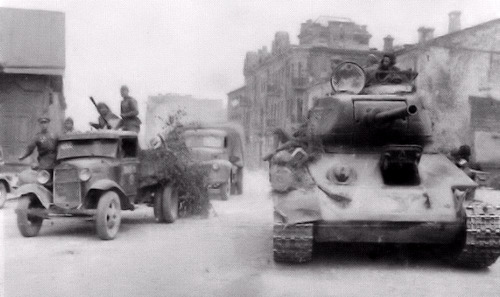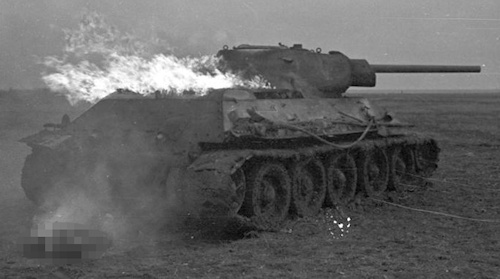The T-34 medium tank was, in its own right, the backbone of the Soviet armored units in the Second World War. It was conceived and designed between 1937 and 1940; entered service from 1940.
There are many who have said and written that the essential tracked vehicle in the Second World War was the medium tank: the Soviet Army implemented this principle with exceptional consistency by focusing the armament of its armored departments on the T-34/76 and subsequent specimens .
It should be noted that the tank we are discussing today made up three quarters of Soviet armored production during the conflict.
Another fundamental aspect to note is that the T-34 tank began to form the main component of the Soviet armored departments around 1942, when the industrial plants that designed it - evacuated from Ukraine and Belarus - were moved behind the Ural mountains.
Originally it had a 76,2 mm gun, which was completely unusual for a medium tank: the counterparts in service at that time in the various European armies were equipped with smaller calibers.
From the original T-34/76 further variants were later made; on the new versions there were improvements and modernizations to the turret, the purification plant, the lubrication, etc., up to the T-34/85 (following photo).

In this regard: in the battle of Kursk (July 5-August 23, 1943), in which the Soviet army reported a clear victory, the Panzer V Panther inflicted heavy casualties. This made the Soviet military think, so they decided to develop a new version; the new modifications resulted in the T-34/85.
The new vehicle had far superior armament, armor and range to previous models. Furthermore, an 85 mm cannon was mounted which was able to "respond" even more effectively to the German 75 mm cannons.
The T-34/85 entered service between late 1943 and early 1944.
It can essentially be asserted that the T-34 medium tank in the Second World War presented itself as a well-armoured, well-armed and sufficiently fast vehicle. The Soviet vehicle was a real surprise for the German command (the German army had completely ignored the existence of the vehicle).
The T-34 proved tactically superior to many German tanks. Furthermore, when the 85 mm piece was mounted on the Soviet tank, even the Panzer V Panther - medium tanks - got into “trouble” (to put it mildly) and turned out to be inferior to the Soviet medium.
 The T-34 began to become a "legend" and - obviously - Soviet propaganda took advantage of the opportunity and tried to present the vehicle as "the best tank in the world" (exaggerating), however there is not the slightest doubt about the fact which - in its various versions - managed to impress "favorably the technicians of all the belligerent nations"1.
The T-34 began to become a "legend" and - obviously - Soviet propaganda took advantage of the opportunity and tried to present the vehicle as "the best tank in the world" (exaggerating), however there is not the slightest doubt about the fact which - in its various versions - managed to impress "favorably the technicians of all the belligerent nations"1.
The tank was absolutely an excellent vehicle and the numerical aspect of the manufacture proved it: it is estimated between 50.000 and 57.000 units (including all series).
The T-34 medium tank weighed 26 tons (5 tons the T-31/34). The length was 85 m, width 6,68 m and height 3,00 m. The vessel could count on a crew of 2,46 men.
The armor was composed as follows: front of the hull 47 mm (top), 45 mm (bottom), side of the hull 40 mm (top), rear of the hull 45 mm, top of the hull 20 mm, bottom of the hull 15mm; turret front 60 mm, turret side 52 mm, turret rear 30 mm, turret top 16 mm.
Armament consisted of 1x 34mm F-76,2 cannon and 2x 7,62mm DT machine guns.
The engine: Model V-2-34 12L 38,8hp V500 diesel engine. The maximum speed was around 53 km/h.
1 See PF Cazzani, The T-34 tank (USSR), in Storia Illustrata n°189, 1973, p.125
Photo: Bundesarchiv / web












